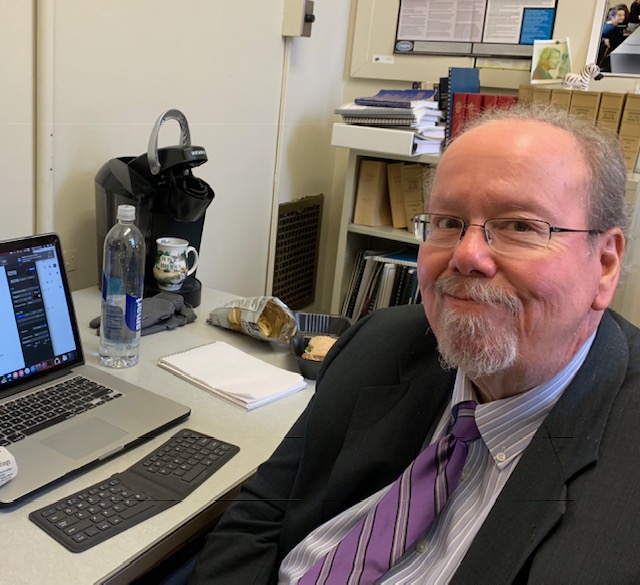
By GARRY RAYNO, InDepthNH.org
CONCORD – Lawmakers often do things today they know have future consequences with the attitude that will be another legislature’s challenge.
How often do legislatures cut tax rates for the budget they craft during their two-term? Usually, the rate cuts begin in the next biennium’s budget which will be the next legislature’s problem two years later.
The legislature for the 2015-2016 term patted itself on the back for finding a solution to funding the remainder of the Interstate-93 expansion project from Salem to Manchester as the money was running out and the project was not close to being finished.
US Rep. Ann McLane Kuster worked with the federal Department of Transportation and the Senate Budget Committee to “find” $200 million in low-interest money under the Transportation Infrastructure Finance and Innovation Act.
The federal money is loaned to states and the interest charge does not kick in until the proceeds are drawn.
Other funding was switched around including GARVEE (Grant Anticipation Revenue Vehicle) bonds and various state projects like betterment and local bridge aid, so the I-93 funding was secured and the project could be completed.
Also involved in this was an 11-cent gas tax increase with future proceeds allocated to retiring the TIFIA bonds.
At that point no one was anticipating a pandemic to cut state funding to highways because no one traveled for a year, or the Infrastructure Invest and Jobs Act money that helped pay for some major construction projects.
Even with the federal infrastructure money, the state’s latest Ten-Year Highway Improvement Plan is “fiscally restrained.”
And one of the big reasons is the TIFIA money is almost gone, $35 million remains in fiscal year 2025 for paving and bridge aid for cities and towns, and $2 million in 2026 when the state has to begin paying back the TIFIA money.
Between 2025 and 2026, the state’s I-93 debt service jumps from $2.19 million to $23.41 million or an increase of a little over $21 million for the next 10 fiscal years until the federal loan is paid off.
That is $21 million currently funding paving projects on rural highways not eligible for federal funding and bridge aid that will no longer be available.
In Gov. Chris Sununu’s transmittal letter to the House, he notes the reduction.
“This leads to a reduction in paving of approximately 200+ miles, which is projected to result in the decline of roads in good/fair condition,” Sununu said. “GACIT (Governor’s Advisory Commission on Intermodal Transportation) sees this as a priority that needs to be addressed at the State level and urges that options be developed and considered to continue funding this effort for roadways not eligible for federal funds.”
In other words, the legislature needs to find $22 million annually to not have the state’s rural roads deteriorate over the next decade.
It is a little late in the session to be exploring ways to find the money on a consistent basis to ensure New Hampshire’s rural roads are not in poor condition.
If lawmakers do not want to appear to be raising taxes in this election year, they can ignore it and let the newly elected 2025-2026 legislature deal with the problem.
But the TIFIA money is not the state’s only highway construction and maintenance problem.
Sununu notes in his letter the draft highway plan submitted by the Department of Transportation focused on “maintenance and preservation of the existing road and bridge network, continue to invest in the core system programs, increased focus on Regional Planning Commission priorities, increased investment in municipal owned red-listed bridges, and focusing on existing projects and programs with the revenue to be received by the IIJA (Infrastructure Investment and Jobs Act.)”
The problem the state has is the Highway Fund it depends on to pay for the non-federally eligible projects is not the cash cow it once was and has not been for some time.
In the past the state has “sold” sections of the turnpike system and bridges to the Turnpike Authority, which can more readily raise bonds at lower expense because of its revenue stream, i.e. tolls, than the state.
That was done to refrain from raising the gas tax, which the state eventually did in 2016 after decades of holding it steady.
The Highway Fund is dependent on a number of revenue streams, mostly the gas tax and vehicle registrations, and while registrations have an upward trend, the gas tax trend is going in the opposite direction.
The two things everyone believes are positives, greater efficiency, and lower emissions, have lowered the receipts.
Vehicles travel farther today on a gallon of gas than in the past, and electric vehicles reduce the state’s auto emissions because they do not burn fossil fuels and there’s the rub.
Ten years ago, the gas tax produced $257 million in fiscal year 2014, and $260 million in fiscal 2015.
In the years around the pandemic, the highway fund took in between $226 to $229 million, before jumping to $282 million in 2022 when 10,000 more vehicles were registered before dropping to $237 million in the most recently completed fiscal year 2023.
The projection for this fiscal year for the Highway Fund is $260 million and currently is running $4.3 million below expectations and below what was collected last fiscal year at this time, so hitting the estimate this fiscal year is shaky.
The other financial problem facing the state’s transportation system is the federal money is also expected to decrease, both because the IIJA program will end soon, as will other federal money associated with the pandemic, and the federal gas tax has the same problem as New Hampshire with more efficient vehicles and the growth of electric vehicles.
For fiscal year 2025, the first of the new Ten-Year Highway Plan, the state anticipates receiving $373.6 million in Federal Highway Administration funds and $301 million in fiscal year 2026.
When the federal pandemic money is gone, it is expected to drop to $281 million in 2027 and into the $260s million for the next five or six years.
All those money sources add up to significant shortfall even without considering inflation and is it any wonder why no one wants to boost people’s anticipation about new major highway projects.
The roads New Hampshire once was so proud of compared to Massachusetts may soon resemble the Bay State’s in years past.
The next legislature faces an overwhelming challenge in finding ways to maintain New Hampshire’s highway system to go along with two very expensive court orders on education funding.
The bills are coming due.
Garry Rayno may be reached at garry.rayno@yahoo.com. Garry Rayno may be reached at garry.rayno@yahoo.com. Distant Dome by veteran journalist Garry Rayno explores a broader perspective on the State House and state happenings for InDepthNH.org. Over his three-decade career, Rayno covered the NH State House for the New Hampshire Union Leader and Foster’s Daily Democrat. During his career, his coverage spanned the news spectrum, from local planning, school and select boards, to national issues such as electric industry deregulation and Presidential primaries. Rayno lives with his wife Carolyn in New London.






